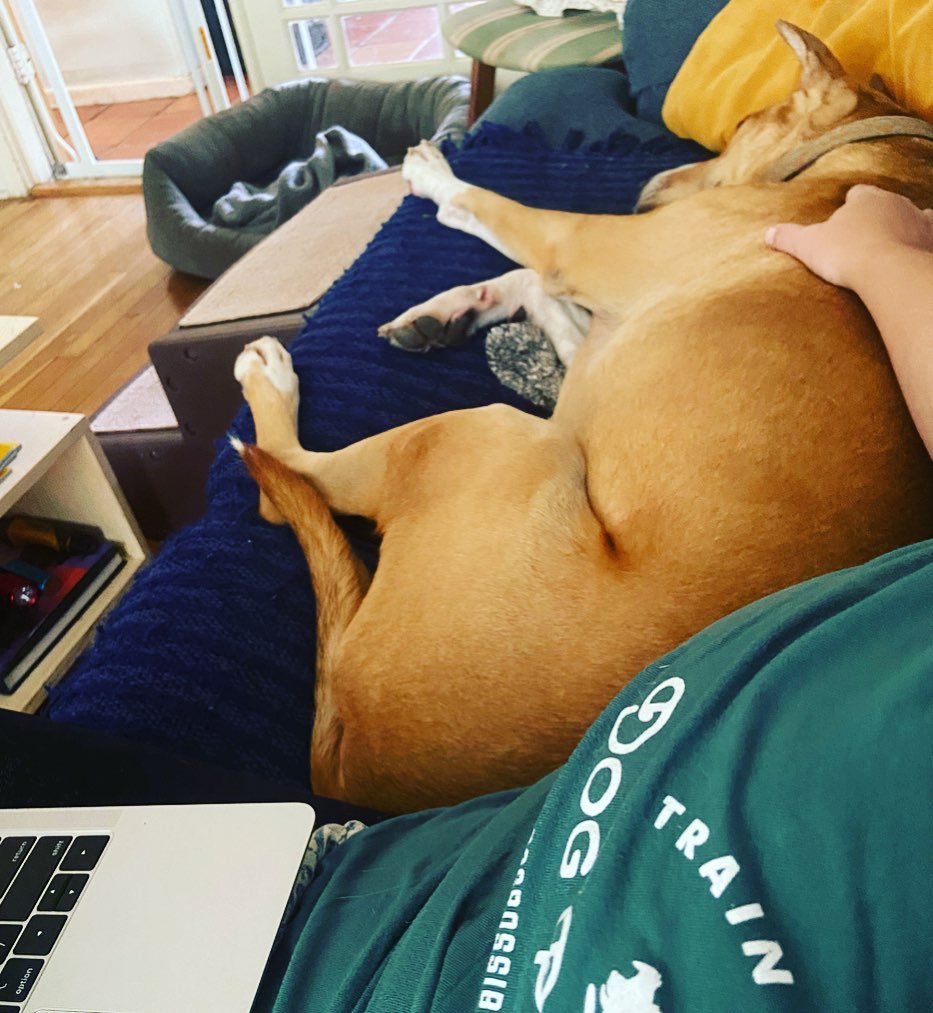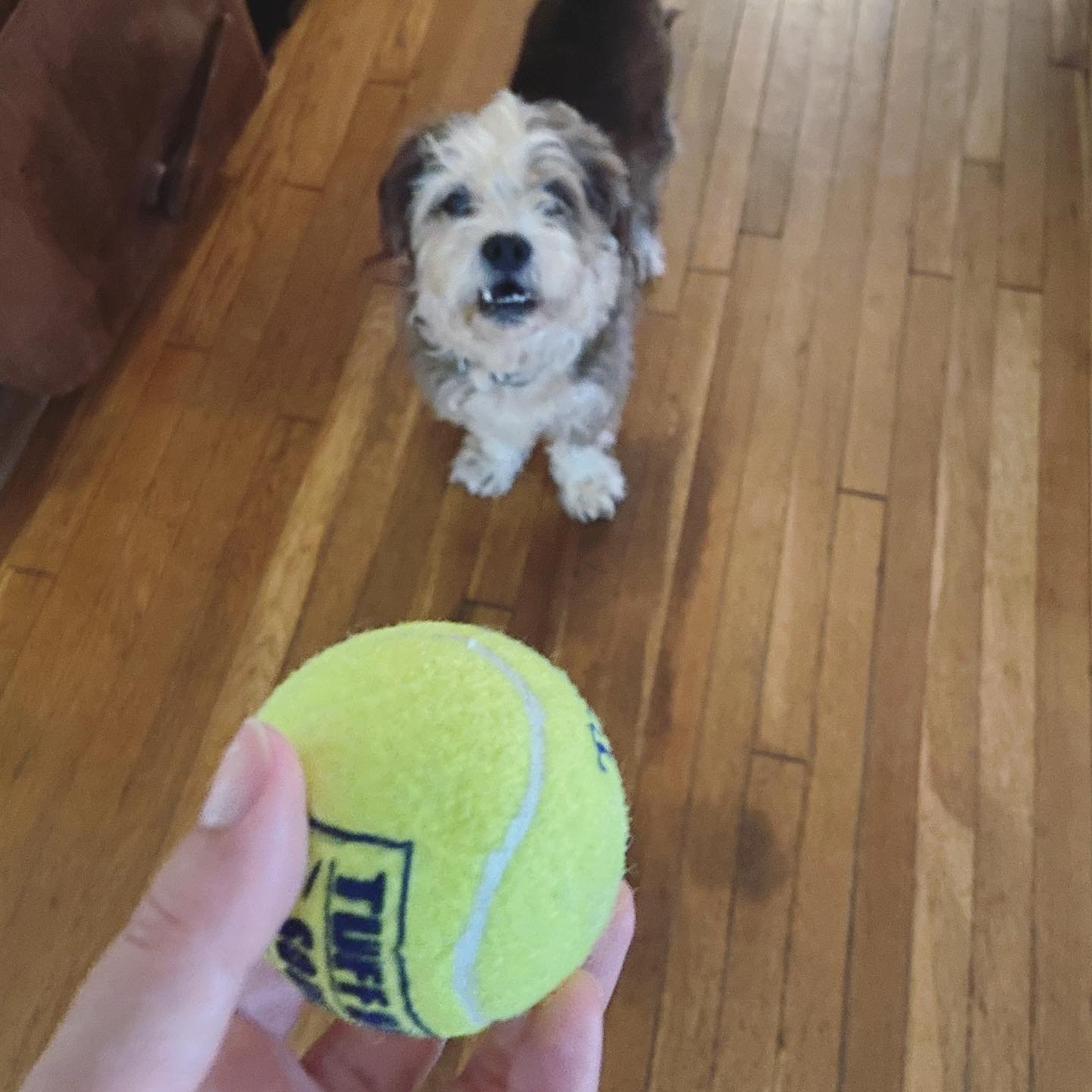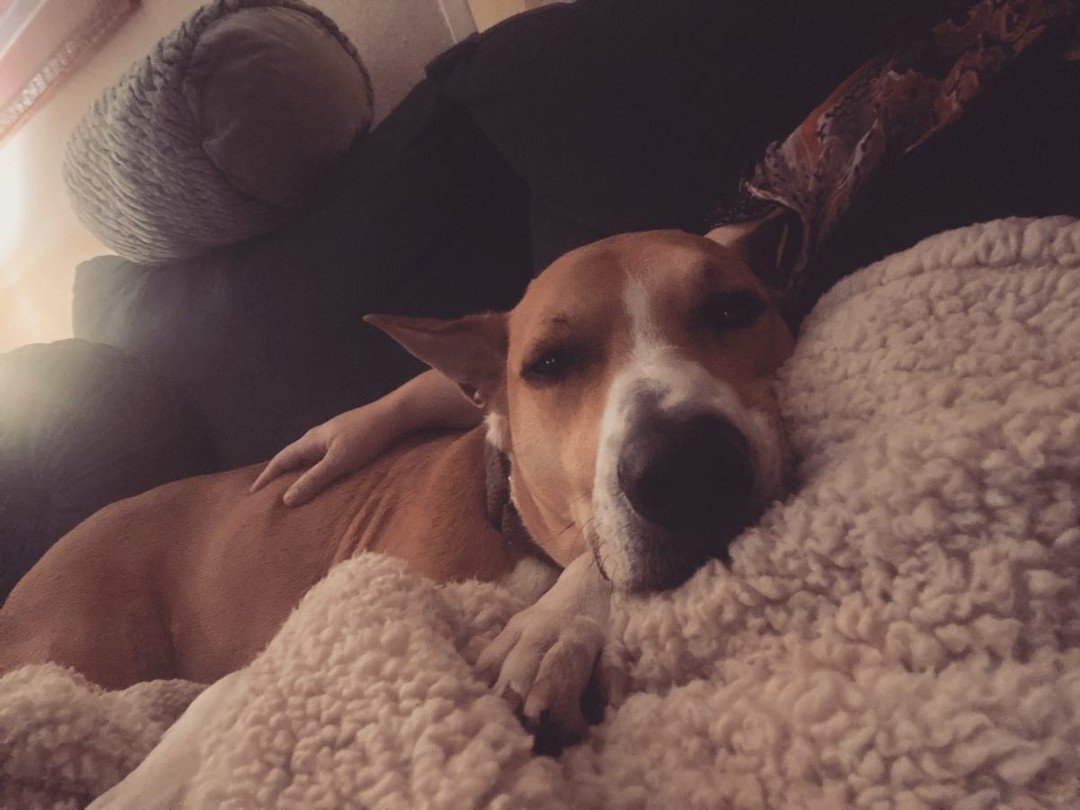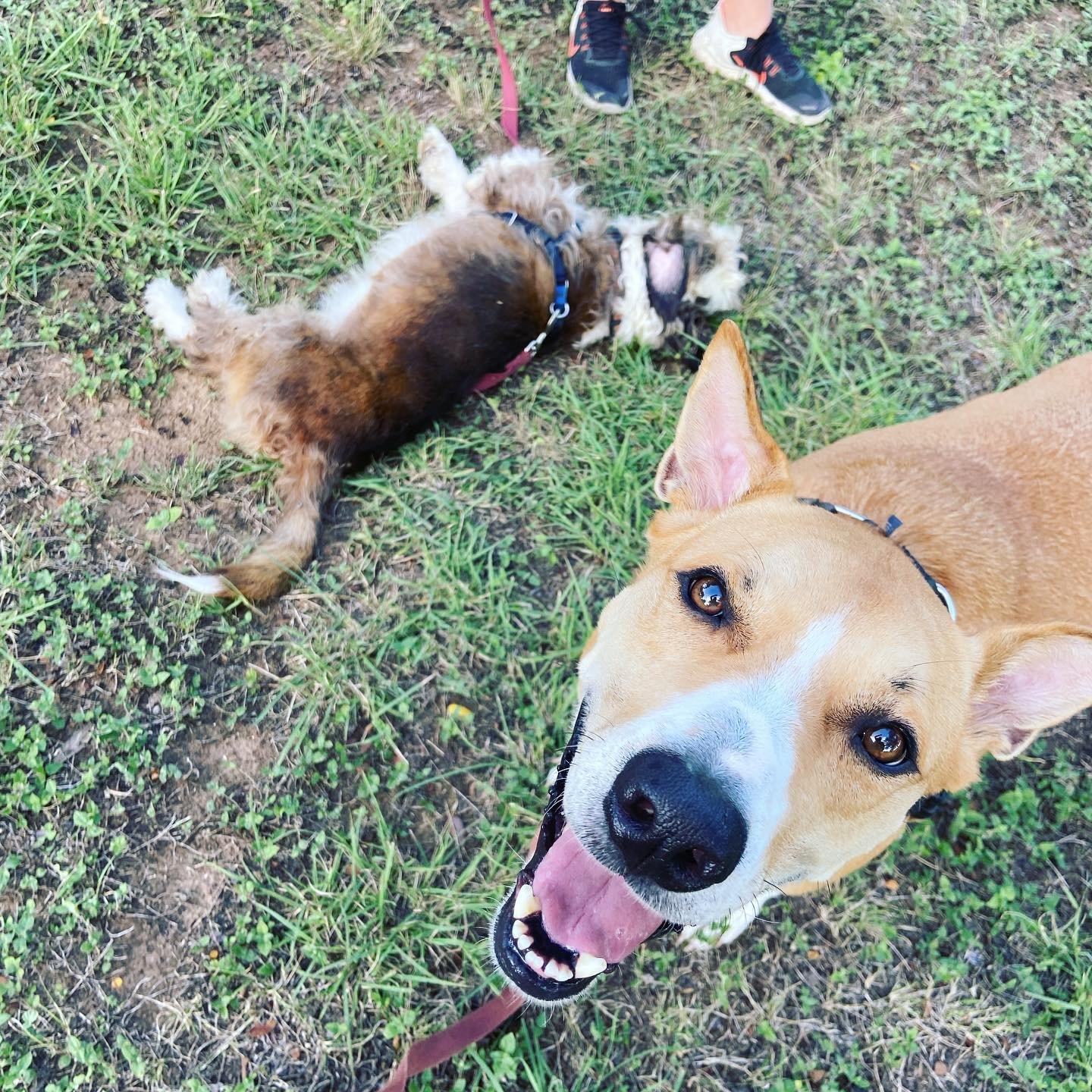Self-Care and Sustainable Practice for Dog Pros
For a lot of us, dog training is our dream job. A passion since childhood turned into a livelihood. Sometimes it’s even the job we left that other more stressful job to do! Many of us are our own bosses. We make our own schedules. We get to hang out with dogs all day. So how in the heck could this be stressful?!
Well, we’re pretty sure any fellow trainers or pet pros reading this are already listing out the many ways in which even our chosen dream job can put us at risk for things like burnout and compassion fatigue. That doesn’t mean we’d trade it for the world. But it does mean we need to make sure we’re doing this work sustainably so that we can keep doing it and doing it to the best of our ability for the people and pups who are relying on us for help. And so we don’t end up looking like this at the end of the day…
Figure Out a Schedule That Works for You
Like, that REALLY GENUINELY works for you. Dog training is typically not an office job with set hours and most of us are making our own schedules. There are advantages and disadvantages to that, especially for those of us who ‘could really fit that extra appointment in this week because we really want to help and well, we think we could make it work just this once and also on Tuesday and again next week and…’
When figuring out a schedule that works for you, we’ve got a few tips to consider:
Budget time for admin work. Our appointments are usually hands on, direct interaction time with clients. That means we need to budget time in our day for administrative work like training plans, correspondence, content development, and anything else that requires additional work outside of appointment times. Make admin work part of your regular schedule so you aren’t drowning in it or scrambling to get it done and ending up working accidental 12 hour days. We recommend making it part of your schedule before and/or after your daily appointments . And if you can swing it, having a dedicated admin work day or half day each week or even every other week can be incredibly helpful.
Make sure you schedule yourself off hours. If you decide your days off are Fridays and Sundays, you are OFF on Fridays and Sundays. This is a lesson we often have to learn the hard way and then relearn from time to time. But truly, schedule your off hours (we are not on call 24/7 even on the days we work) and your days off and stick to them. Communicate them clearly and when you’re off, engage in non-work related activities that help you recharge. PS. You can and should take vacation time too!
Consider a set time for emergency appointments. For those of us who take higher level behavior cases, there will always be inquiries that feel like emergencies. If you typically have a wait for new appointments but know you regularly get inquiries like this, it can help to find a time in your schedule, even if it’s just one or two slots a month, that works well for emergency appointments. That way, you can offer more urgent help when you feel it’s warranted without burning yourself out adding appointments to your caseload you don’t truly have time for. Thanks to a tip from a colleague, we’ve started making our emergency appointments virtual ones on our admin day and that has helped a ton.
Have a referral list. This is important for cases like those mentioned above but there are also times when your wait may be long enough or your caseload heavy enough that it’s helpful to offer clients some additional options. Sometimes a case just might be a better fit for a different trainer. Another perk of doing this is you get to refer to colleagues whose work you trust and respect and ensure the client is more likely to end up in good hands.
Have alternative resources ready to go. We have found it super helpful to have our blog, resource library, and recorded webinars to refer people to, particularly new clients waiting on an appointment where getting them some actionable information right away can make a big difference. Our most used recorded webinars for pinch hitting in those more emergent cases are Aggression Between Dogs in the Same Household, Owner Directed Aggression, and Guarding Behaviors and being able to get those to clients on demand has been so helpful.
Know What You Love
Do you want to specialize? Some of us prefer certain kinds of cases. Others prefer as much diversity in our caseload as possible. Specializing doesn’t mean we don’t see and love other cases but specialties tend to grow out of what you naturally are drawn to. If you find yourself most interested in and energized by certain cases, try to make sure those cases are well represented in your schedule.
Diversity of services? This is something our trainer crew has pretty universally found to be important. Diversity of services might look like differently formatted private sessions, group classes, webinars, workshops, day training, virtual services, online class offerings, classes or services that partner with other local professionals, or any number of things that keep you engaged and loving the work you do. And if you do thrive with a specific style of service set on repeat, embrace that and run with it!
Dogs, behavior, and humor! Those are the things that brought us here. We love the dogs and want to spend time with them, learn from them, and help them live their best, happiest lives. We are fascinated by behavior and all that goes with it. And working with dogs is both fun and FUNNY, y’all. Stay connected to those things you love about the job. Immerse yourself in them, find new things to discover about them, and keep that magic spark glowing brightly.
Be Prepared for the Sad Stuff
We unfortunately haven’t found a way to avoid this so the best we can do is have some strategies in place for coping with the sad stuff when it happens. Misinformation is everywhere in the dog behavior field and you’re going to see dogs - and humans - who have been victimized by it. You will see dogs who have been mistreated, often not intentionally but sometimes traumatically so. You will see humans and dogs who are suffering together because of behaviors and their impacts, sometimes behaviors that could have been prevented but sometimes not. You may have to support people who love their dogs very much through the process of behavioral euthanasia. You may have to do this for dogs you love very much too.
You will likely run into cases where you see ways that things could be different but the circumstances don’t allow for it or you aren’t able to get the necessary humans on board. Or ways things could have been different but now the battle is uphill. If you work with dogs in a shelter and rescue setting, you will see shelter stress and failed placements and dogs you love and believe in traveling a much harder path than they should have to. It is hard, to the point of being impossible, not to feel the hurt of these experiences.
If your caseload is getting too emotionally heavy, take some lighter cases. For those of us who primarily take significant behavior modification cases, there can be times where we need to intentionally add some easier cases to our schedules. This isn’t always or even often true - a lot of the time those of us who love the higher level cases are having enough of the next bullet point to balance us out and keep us feeling good about things. But if you feel yourself struggling with too heavy an emotional caseload, take note and make some intentional changes with the next few cases you take on.
Focus on the successes. Big successes, small successes, and everything in between. We do good work out here and so do the dogs and humans we get to work with! Behavior change is hard. It is no small feat. Successfully creating positive changes, improving quality of life for dogs and the people who care for them, bringing a little more hope and joy into the world…these things are a big deal. Don’t focus on notching perfect outcomes. Celebrate the beautiful, messy process of positive behavior change and the resilient humans and dogs engaging in it. Love and celebrate the dogs for who they are and try to help their humans do the same.
Get right with your ethics. As of this writing, the dog behavior field remains unregulated and there is always fresh new controversy swirling and taking up far more attention than it merits. What merits our attention is getting it right for dogs and the people who love them. The current cultural environment surrounding sharing our lives with dogs and choosing to work with dogs for a living can feel demoralizing and exhausting. It can help to take a step back, block out the noise, and do a gut check and an ethics check. Our most recent attempt at that is here and we’ll probably revisit and update as we swim up through the current flood waters and breathe in some fresh clarity.
Put effort towards what you can change, let go of what you can’t. We cannot move into people’s homes or adopt 500 dogs into ours so that we can ensure every training plan and suggestion is implemented perfectly all the time. We can’t control what a dog or a person has experienced before they came to us. We can’t control genetics. We also can’t be absolutely perfect trainers 100 percent of the time. We can do our best to get things right, to generate buy-in, and to encourage progress but ultimately, what we can do is only one of many variables influencing what a dog’s trajectory forward is going to look like. (Note to any owners reading this, this is true for you too! Behavior change is messy and hard and we can all only put our best effort forth.)
Take Care of Your Body
Yes, we’re serious! You can’t handle dogs when your back goes out and if you’re exhausted and run down, your skills will suffer. In addition to all those basic healthy habit things we humans have such a hard time being consistently awesome about, here are a few things we find especially important…
Stretch it out. Whether you are a fan of yoga or just stretching out in a way that works for you, we highly recommend staying bendy. Again, yes, seriously. This can also be great tension and stress relief but more practically, it’s injury prevention.
Spring for health insurance. We know some trainers and pet care pros who don’t carry it and we get it, this isn’t a wildly high earning field and many of us are self-employed and paying for insurance out of pocket. But it’s also not a field without risk. And while those of us who work aggression cases are usually pretty darn good at not getting bitten, mistakes happen and you don’t want to find yourself trying to glue a bite together at home because you’re afraid to go to the hospital. (And yes, this is mostly a note for those of us in the US and is a systemic issue our country oughta fix like yesterday. But until that happens, please take care of yourself.)
Get better at resting. For those of us who aren’t great at shutting off our brains and getting a good night’s sleep, we can share a few things that help us. 1. Pick a time each evening to put your phone away for the night. Don’t touch it until the next day. 2. Instead of falling asleep to the tv, read a book or do an activity like a crossword puzzle to wind down. 3. If you struggle falling asleep to silence, experiment with relaxation promoting music or ambient sounds but put it on a timer so it doesn’t wake you up or impede your rest later in the night. 4. See if a sleep mask helps you fall asleep faster and sleep a bit deeper. They are great for blocking out light and making it less likely you’ll reach for your phone.
Bring snacks & water to work. Simple but we have to remind ourselves too. A lot of us are out and about during the day and it helps to stay hydrated and to make sure you don’t end up heading into an appointment hangry! Get a little cooler or lunchbox and an ice pack and fill it with easy, healthy stuff to munch on during the day. With rising temperatures, we’ve added electrolytes in the summer when we’re out for an especially long time in the heat!
Take care of your skin. Find a sunscreen you are willing to wear every day and a hand lotion you adore. For those of us outside for large swaths of the day (especially here in Texas) and dealing in meaty bits and dog slobber, those two items can have a big impact.
Embrace What Works for You!
Self-care and sustainable practice looks a little different to everyone. They are not one size fits all OR an either/or type thing. We all need good self care habits that work for us but we also all need sustainable practices and that includes healthy boundaries and getting comfortable setting them. The more broken the system around us is, the more important how we set up our little corner of things becomes. It would be much easier to do this work in an ethically regulated field that consistently behaved like a supportive community. Alas, we’re not there right now so it’s important that we take stock of what works for us, how we want to engage - or not engage - with the messiness, and to chart a path forward that keeps us doing good work in the field we love.






